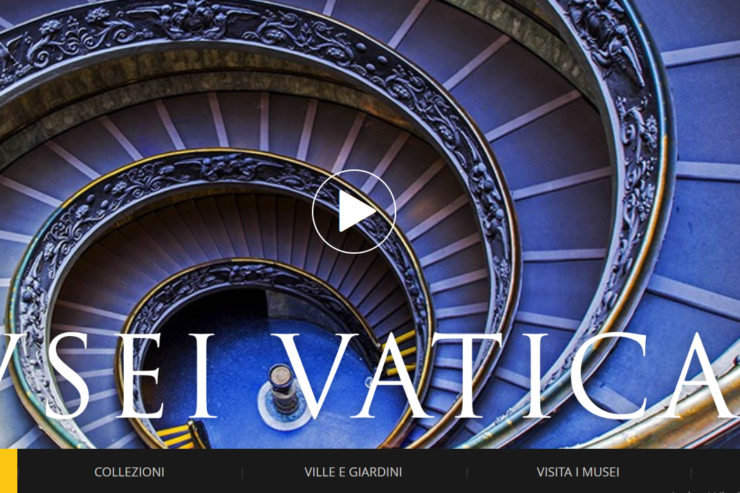Elegant and sophisticated, attractive and easily accessible and navigable from any device and platform, is how the new Website of the Vatican Museums www.museivaticani.va appears, which, revolutionized from the editorial and design point of view, is geared to enriching and facilitating “the experience” of visitors, providing valuable content, in addition to promoting the art collections and many cultural activities of the Museums.
The new site, which consolidates and innovates the presence of the Pope’s Museums in the digital world, was presented today in the Vatican Press Office by the new Director, Barbara Jatta, by Monsignor Fernando Vergez Alzaga, L.C., Secretary General of the Governorate, and by Monsignor Dario Edoardo Vigano, Prefect of the Secretariat for Communication.
In fact, the prelate, who introduced himself as an “appraiser of this house of beauty that the Vatican Museums are,” revealed that, in the next few days, the new site will document the journey of some of the works of art to China. Therefore, the site will witness the existence and importance of a “diplomacy of the beautiful.”
Its restructuring, continued Monsignor Vigano, is inserted in the process of reform of the Vatican media desired by Pope Francis. “It’s not simply about an aesthetic re-styling but corresponds to a project of relation-interaction with the user himself, useful to the graphic interfaces understood as projected spaces to enable users to interact in the main with the works.” Therefore, it is not a “make-up operation” but rather “a strong contractual impact with the viewer given first of all by the homepage that leads the visitor to that experience.”
A homepage — explained the Prefect of the Secretariat for Communication –, “is a threshold, to use the terminology of semiotics, with a strong contractual impact, a place where the curiosity of the viewer meets an object of value. In as much as that, it must be fascinating, pertinent and accessible; the texts must be complete but brief, taking into account that reading on the screen is slower by about 25%.
There will be few contents in the site, but “credible, pertinent, simple and ordered,” specified Monsignor Vigano. They are, namely, those that “we find together with masterpieces in evidence seen from unpublished points of view.” Moreover, particular importance has been given to the section dedicated to the Restoration, “which says how much a Museum is alive and brings together the history, which corresponds to the work of translation of ancient texts.”
Developed in a responsive way, www.museivaticani.va will be able to be consulted by computers, tablets, smartphones and viewed in five linguistic versions (Italian, English, Spanish, German, French) all aligned by style and especially by content. To inspire the work of computerized information, in addition to the most recent theories and practices of communication, Pope Francis wishes to render “his” Museums ever more open and accessible to the world, expanding – in an absolutely innovative way – knowledge, sharing and promotion of the Papal Collections, the offer of services to the visitor, the production of content, putting the visitor, the Institution and its excellences at the center.
Therefore, the new site was thought out in order to render the content accessible to the greatest number of users through simple and intuitive navigation and offering information in a clear and quick way. Ample space is dedicated to the visual and emotional component, with images of great dimension and high definition that accompany the virtual visitor in a immersive thought-provoking tour, which offers a transparent global vision of the Vatican Museums, comprehensive be it of the collections as well as of the complex internal organization in its scientific, technical and administrative components.
“An aspect which I hold particularly dear is the online catalogue of the works,” explained Barbara Jatta, “an important showcase, but also a precious didactical instrument, before but also after the visit, useful to deepen further the knowledge of what has been seen, once one returns home.” The Director’s hope is that “entering in the Vatican Museums virtually, through these electronic pages, but even more physically, the visitor will be pervaded by that sense of privilege of finding himself inside that beauty that leads to faith and that this media instrument will be equally a vehicle to knowledge, harmony and spirituality.”

Vatican Museums New Web Site
Vatican Museums’ New Website Is Presented – A Thought-Provoking Virtual Tour
Revolutionized from the Editorial and Design Point of View, the Site www.museivaticani.va Is Geared to Enrich and Facilitate “the Visual and Emotional” Experience of Virtual Visitors


